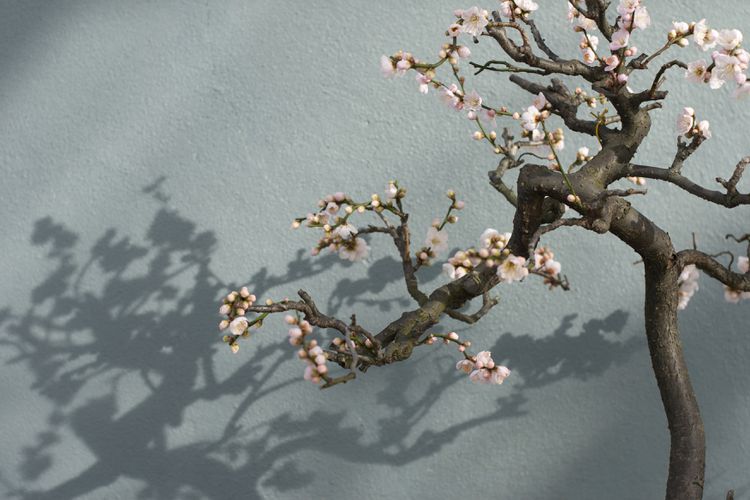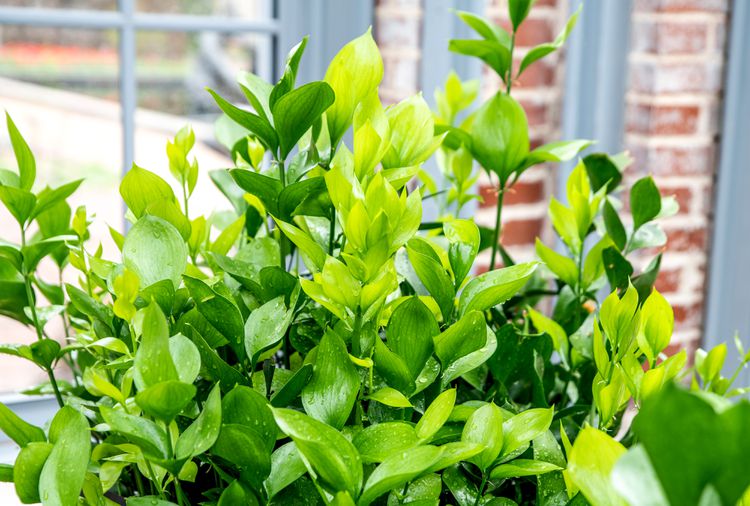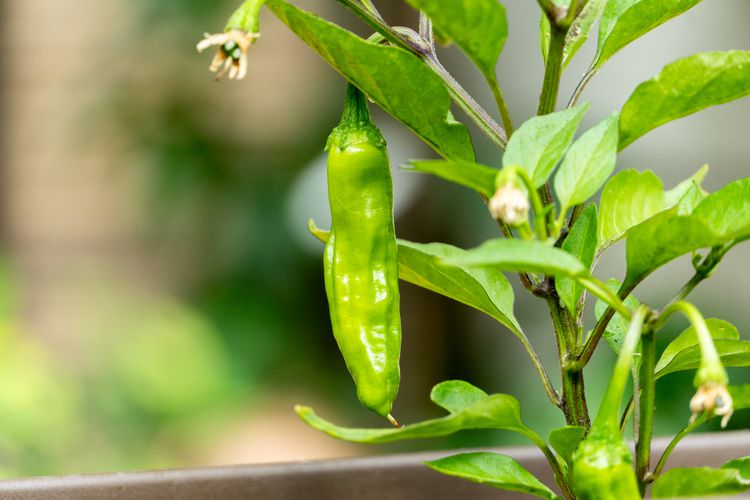Vanessa Richins Myers holds a Bachelor of Science degree in horticulture and possesses more than a decade of expertise and training in the fields of horticulture and gardening.
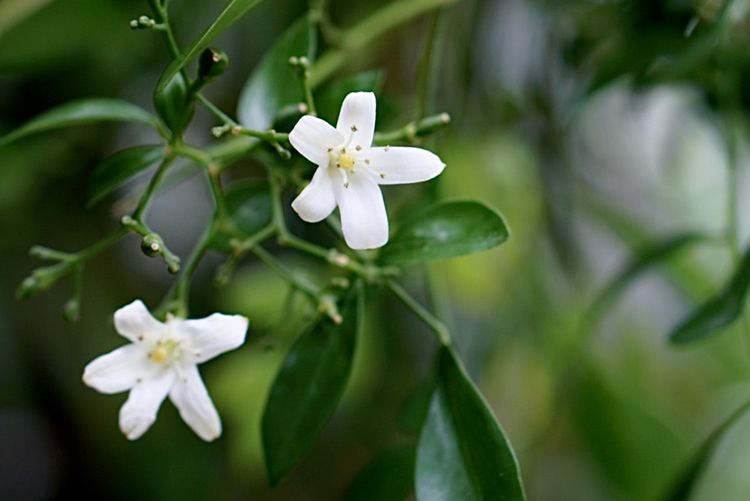
Orange jasmine, often referred to as orange jessamine or mock orange, is a tropical shrub that produces fragrant flowers with a delightful blend of citrus and licorice scents, drawing in bees, birds, and butterflies. Despite its name, orange jasmine is not a true jasmine but belongs to the citrus family. This plant thrives in USDA zones 10 to 12, preferring warm conditions, morning sunlight, filtered light in the afternoon, and humidity levels above 50%. It is sensitive to frost and should be brought indoors in colder climates during the winter months.
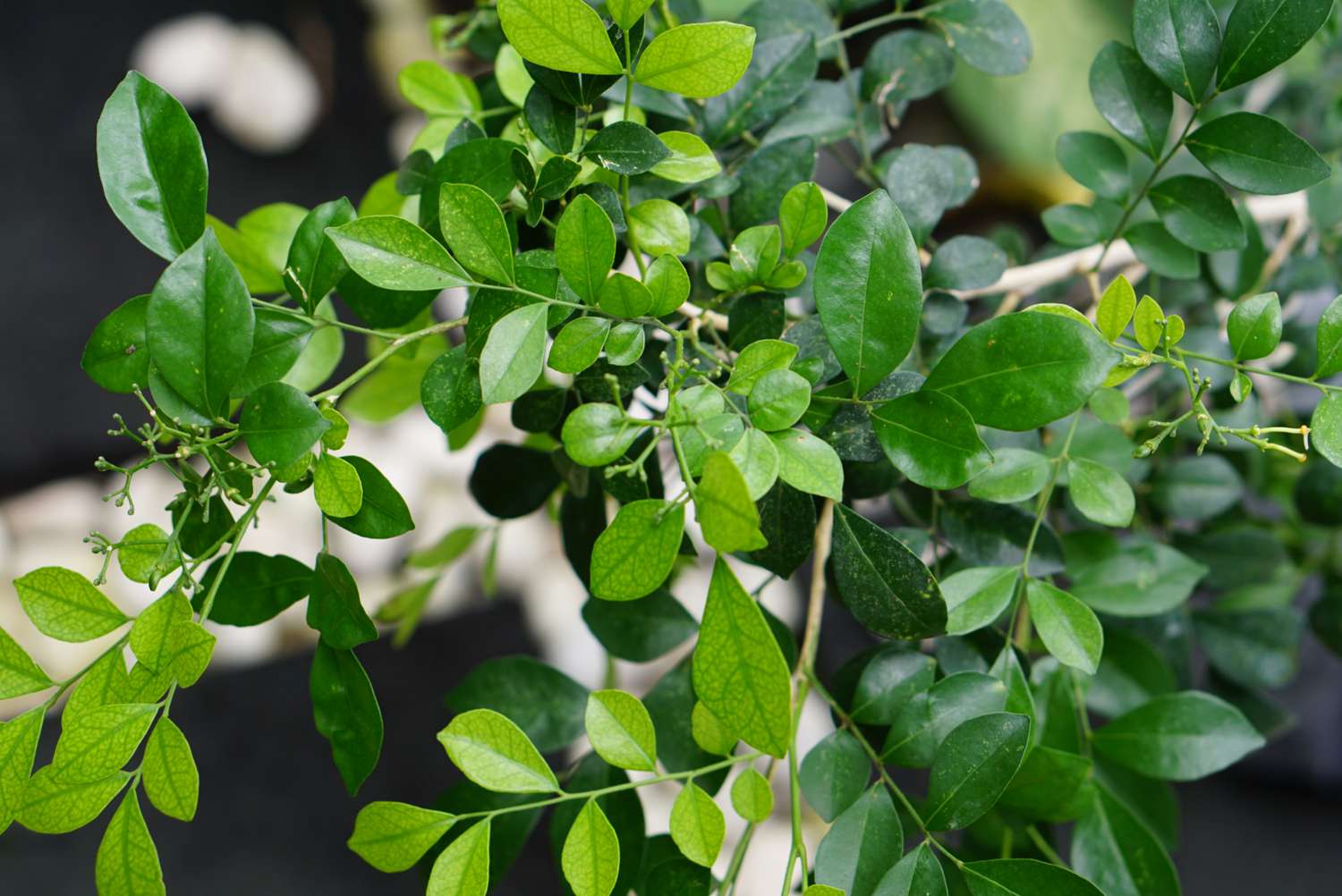
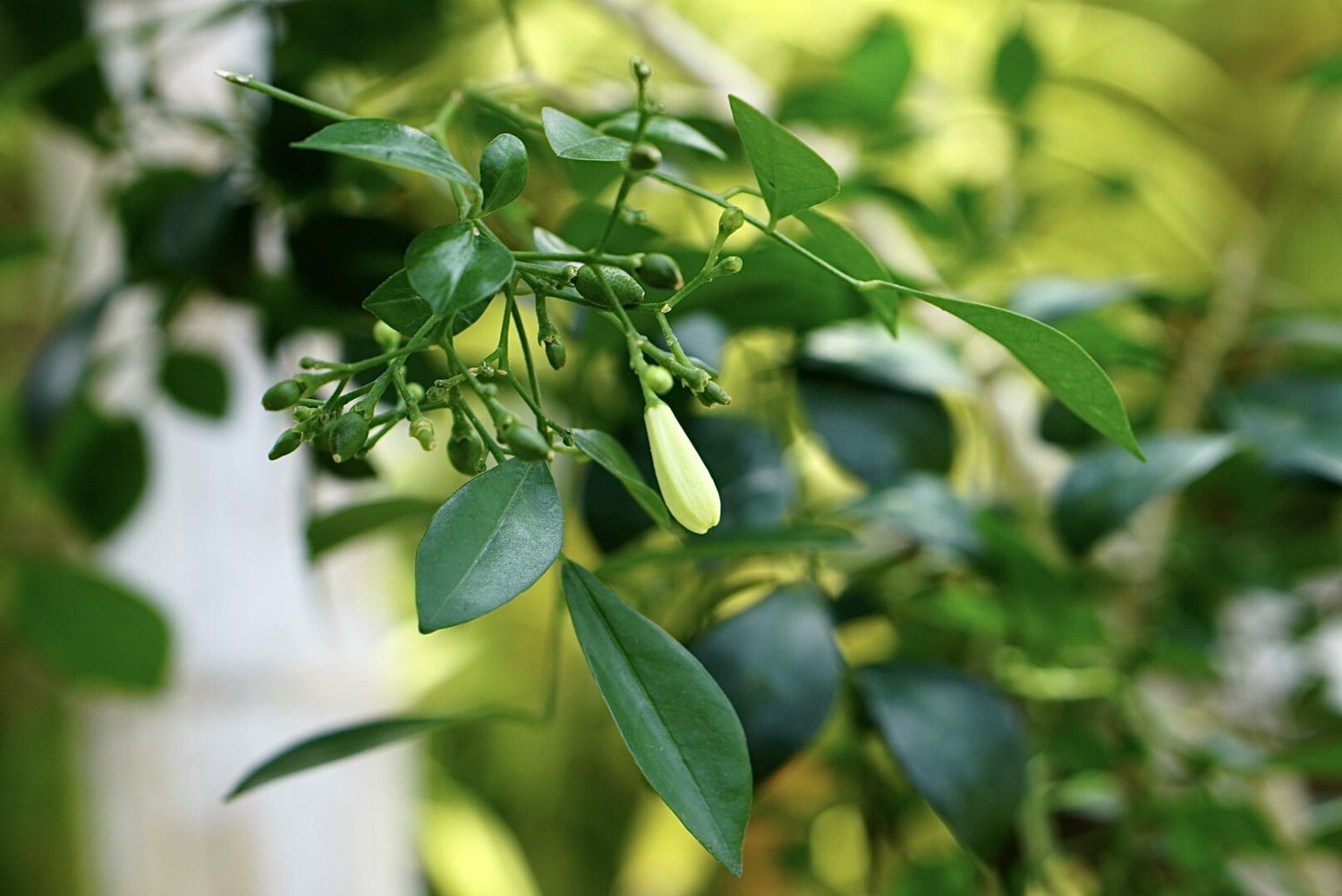
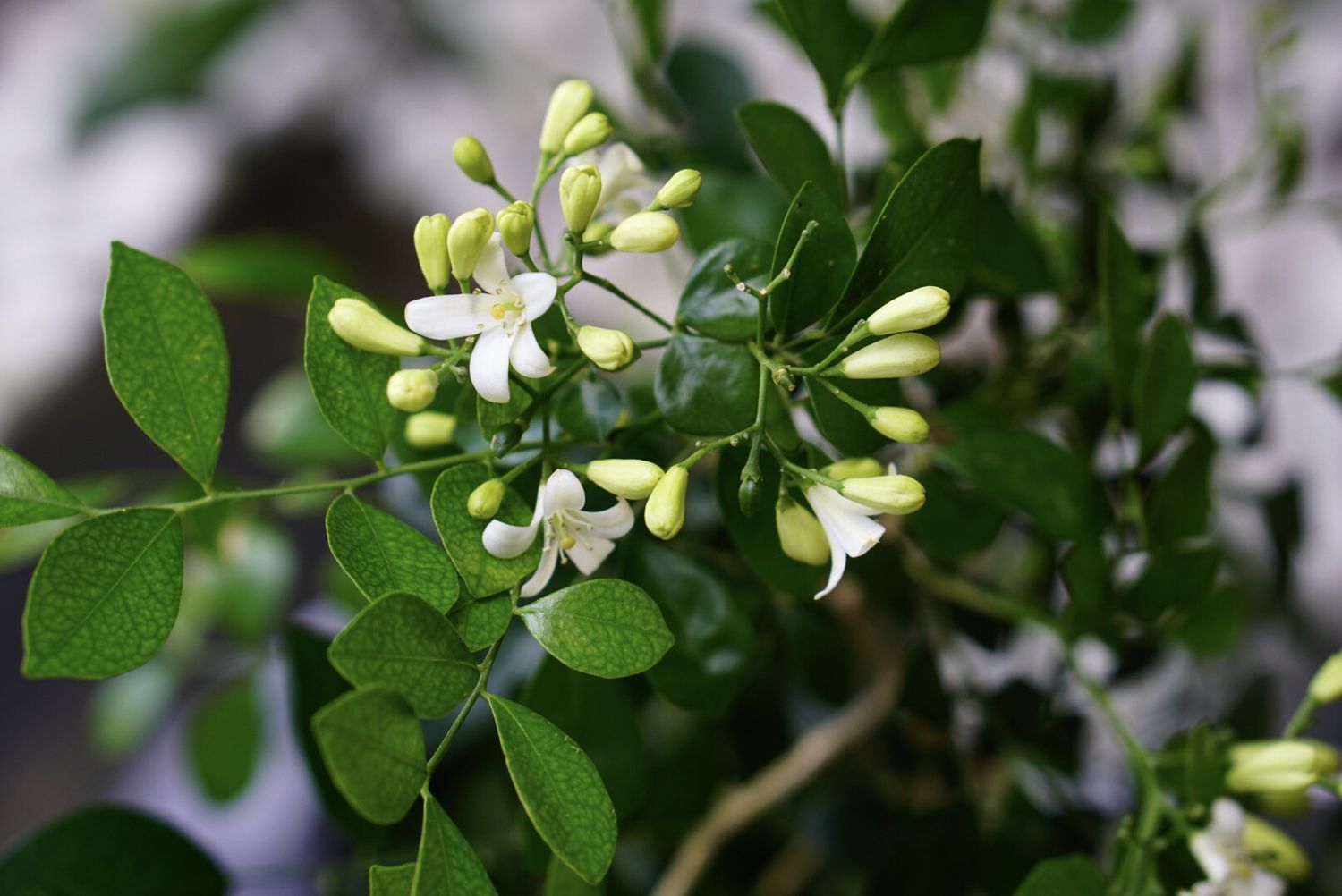
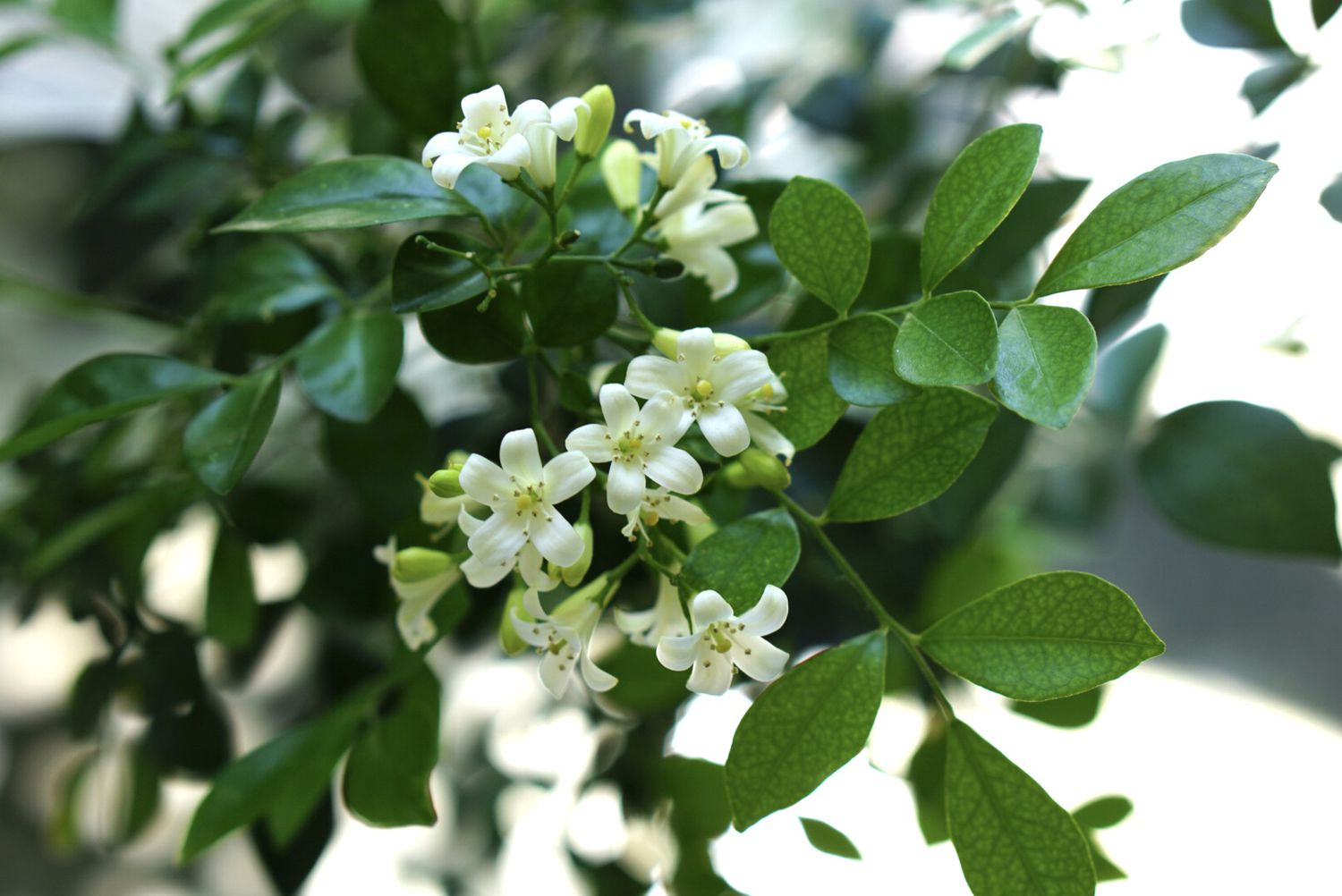
Light
Orange jasmine plants need to be shielded from intense, direct sunlight. Position the plant in an area that gets morning sun but is shaded in the afternoon, or in a spot that provides filtered sunlight or shade throughout the day.
Soil
Cultivate orange jasmine in soil that drains effectively and is devoid of nematodes (roundworms). Proper drainage is essential since orange jasmine struggles in overly saturated soil. To enhance drainage in soil that is lacking, incorporate organic matter like compost, shredded bark, or leaf mulch. This shrub flourishes in soil that is moderately acidic, neutral, or alkaline, with a pH range of 6.6 to 7.5.
Water
Water your orange jasmine plants thoroughly when the top two inches of soil feel dry to the touch. Typically, providing about one inch of water each week is sufficient. However, if you reside in a hot climate or if the plant is in a pot, you may need to water it more often. Be careful not to let the plant sit in waterlogged soil.
Heat and Moisture Levels
Orange jasmine thrives in tropical conditions, requiring humidity levels to exceed 50 percent and temperatures to remain above 40 degrees Fahrenheit, as it cannot withstand frost. While it prefers higher humidity, it can manage in drier environments as well.
Fertilizer
Fertilize orange jasmine plants every three to four weeks during the growing season, which spans from spring to fall, utilizing a fertilizer specifically made for evergreen plants. If the plant is potted, you can opt for a balanced, water-soluble fertilizer intended for evergreen shrubs. Be sure to adhere to the dosage guidelines provided on the product label.
Varieties of Orange Jasmine
The leaves of Murraya paniculata are glossy, oval-shaped, and a rich green, emerging from its uniquely twisted branches. Once fully mature, typically after three to four years, this shrub can reach heights and widths of eight to twelve feet, exhibiting a rounded growth form.
The plant’s scientific designation, “Murraya,” pays tribute to Johann Andreas Murray, an 18th-century scholar in botany and medicine. There are two varieties of M. paniculata, which are:
- M. paniculata ‘Lakeview’ is the main commercially available variety of this species.
- M. paniculata ‘Exotica’, commonly known as mock orange, features larger blooms and leaflets measuring between 1 1/4 and 2 3/4 inches. In contrast, the specimen plant displays narrower petals and smaller flowers.
Other varieties of orange jasmine are not easily found beyond their native habitat. If you’re in search of a plant that features flowers resembling orange blossoms, you might want to explore these two options:
- Mock orange (Philadelphus coronarius): Tolerant to USDA zone 4.
- Mexican orange (Choisya ternata) flourishes in USDA hardiness zones 7 through 10.
Pruning
Young orange jasmine grows rapidly and may require frequent trimming to keep its shape. It can be shaped into a small tree and utilized as a hedge through regular pruning during its early growth stages. Trim as necessary to eliminate any dead, damaged, or unhealthy branches. It’s advisable to avoid excessive pruning, as it’s recommended not to cut away more than one-eighth of the plant’s growth each year.
Cultivating Orange Jasmine
The plant can be reproduced by taking stem-tip cuttings during the spring or the beginning of summer.
- With a sharp knife or pruning shears, cut a four-inch segment from a part of the plant that is free of flowers. Remove all the leaves except for the top two.
- Take a four-inch pot and fill it with a light potting mix, then water it thoroughly until it is uniformly damp. Apply rooting hormone to the cut end of the cutting and place it into the soil, ensuring it is buried about one inch deep.
- Position the cutting in a well-lit outdoor area, ensuring it is shielded from direct sunlight. When you notice new growth, it indicates that the cutting has successfully rooted. At that point, transfer it to a bigger pot or into the garden soil. After it has settled in, it should begin to grow rapidly.
Cultivating Orange Jasmine from Seeds
The simplest way to propagate the plant is through cuttings, since seeds are not commonly accessible and can take over a month to germinate. However, if you wish to experiment with seeds you’ve gathered from your plant, you can initiate the process indoors. Here’s a guide on how to proceed:
- Remove the seeds from the fruit and let them soak in water for a few hours.
- Position the seeds on top of the seed pots that are filled with a sterile potting mixture. Avoid covering them, as they require light for germination.
- Maintain consistent moisture for the seeds without making them soggy, ideally at a temperature of approximately 82 degrees Fahrenheit. Choose a well-lit area that avoids direct sunlight. Germination typically occurs within 30 to 40 days.
- Once the seedling develops multiple sets of true leaves, transfer it to a bigger pot or plant it in the garden soil.
Transplanting and Replanting Orange Jasmine
When cultivating orange jasmine in pots, it’s important to repot the plant once it starts to become root-bound. Keep in mind that the roots of orange jasmine are delicate. To transfer a mature plant to a bigger pot, choose a new container that is two inches wider.
- Thoroughly water the plant several days in advance.
- Remove any dead leaves, ensuring that you cut away no more than one-eighth of the overall plant growth.
- Take out the plant along with its root ball and soil, and place them into the new pot.
- Carefully add new potting soil around the root ball.
- Water well to stabilize the ground.
Overwintering
In regions below USDA zone 10, it’s essential to move potted orange jasmine indoors during the winter months. Position the plant in a well-lit area or on a sunlit windowsill, ensuring to water it consistently.
Frequent Insect Infestations and Plant Ailments
While this species generally remains healthy and free from diseases, it can still attract specific pests. You might encounter soil nematodes, scale insects, whiteflies, and sooty mold. Nematodes, which are a type of roundworm, can either be helpful or harmful to your garden; when harmful, they can damage plants and transmit viruses. To minimize the risk of nematodes, it’s advisable to purchase plants from reputable suppliers, as they can be contaminated with nematodes at the nursery. Additionally, using neem oil can be effective in managing nematode populations.
Scale insects can be identified by their small white streaks or tan, scaly protrusions on leaves and stems. These pests feed on plant sap, depleting vital nutrients. To manage scale infestations, trim the affected branches and use horticultural oil during the hatching period of the insects.
Whiteflies are capable of spreading diseases to plants and can also encourage the growth of sooty mold, which primarily affects the plant’s appearance. To manage whitefly populations, a range of organic and chemical solutions can be employed, such as neem oil and horticultural oil. Additionally, introducing natural predators like ladybugs, lacewing larvae, and whitefly parasites can be effective in controlling these pests.
Sooty mold is a dark fungus that develops on foliage, potentially blocking sunlight from reaching the leaves. To avoid the formation of sooty mold, ensure that water does not accumulate on the leaves. Additionally, controlling the populations of whiteflies and scale insects is crucial, as they produce honeydew, a substance that encourages mold proliferation.
Tips for Encouraging Orange Jasmine to Flower
Orange jasmine typically starts to flower in its second year and continues to produce blooms throughout the year. If your plant appears healthy but isn’t flowering, the issue may be excessive nitrogen from lawn runoff, which promotes leaf growth at the expense of blooms. To encourage flowering, consider using a fertilizer that is high in phosphorus (P). Be sure to adhere to the application guidelines provided on the product label.
Flowering Periods
Orange jasmine generally flowers throughout the year in optimal conditions. It tends to bloom in warmer weather, which means that in cooler regions, the plants are likely to produce flowers primarily in the warmer months of spring, summer, and fall.
What is the duration of the blooming period for Orange Jasmine?
The flowers of orange jasmine are in bloom year-round, continuously producing new blossoms. They can also bear small, red berries, measuring about half an inch, simultaneously with their flowering. The longevity of the blooms is enhanced by stable warm temperatures, humidity levels above 50%, exposure to full morning sunlight with some filtered light, and soil that is kept moderately moist.
How do Orange Jasmine flowers appear and what is their fragrance like?
Orange jasmine bears small, one-inch flowers that emit a strong, pleasant fragrance. The scent is particularly strong during the night, featuring a blend of musky citrus peel and hints of licorice.
Ways to Promote Increased Flowering
Sunlight plays a crucial role in promoting a greater number of flowers. Ensuring sufficient exposure to sunlight will lead to a more prolific display of blooms.
Frequent Issues Associated with Orange Jasmine
With the appropriate cultivation conditions, orange jasmine thrives effortlessly and encounters minimal issues.
Leaves Turning Yellow or Falling Off
Excessive watering of orange jasmine may lead to leaves turning yellow and, in some cases, falling off. Yellow leaves can indicate chlorosis, which is a sign of a nutrient deficiency. This deficiency can occur when the plant is overwatered, preventing it from adequately absorbing nutrients from the soil.
Water the plant when the top one to two inches of soil feel dry. Excessive watering may lead to root rot, potentially harming or killing the plant.
Drooping Foliage
If an orange jasmine plant does not receive enough water, it will start to droop. Gradually provide water to it to avoid causing any shock to the plant.

